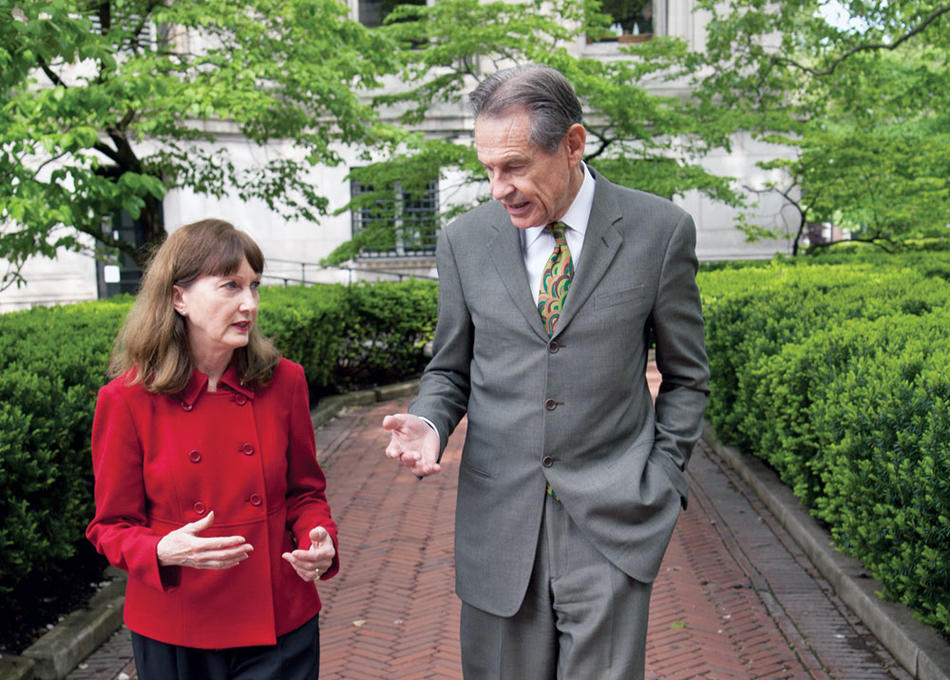Columbia, as part of an ongoing effort to diversify its faculty, has announced that it is setting aside $30 million to recruit professors from minority groups traditionally underrepresented in American higher education, as well as women in science, technology, engineering, and mathematics.
Funds will also support the academic careers of underrepresented students, postdoctoral researchers, and junior faculty. Half the monies will come from the University’s central administration, through the provost’s office. Columbia’s schools will chip in the rest.
The goal, wrote President Lee C. Bollinger and Provost John H. Coatsworth in an April 2 announcement, is to build a faculty that “more closely reflects the composition of the national pool of qualified candidates.”
Over the years, the University has made a significant effort to diversify its faculty, especially in the Arts and Sciences; since 2004, the Faculty of Arts and Sciences has hired about thirty scholars from underrepresented groups. “Columbia has made notable progress in attracting, recruiting, and retaining talented faculty from underrepresented groups, but there is more to be done,” says Andrew Davidson, vice provost for academic planning, who is leading this effort. “These investments give us the opportunity to keep up the momentum.”
The new effort, he says, will broaden the undertaking to include all of Columbia’s schools. He recently sat down with deans across Columbia to review the composition of their faculties.
“John Coatsworth and I understand that each school has different needs and circumstances,” Davidson says. “We asked each school to develop its own three-year strategic plan to enhance the diversity of its tenured and tenure-track faculty, shaped according to its specific situation.
“All Columbia schools are choosing to emphasize the recruitment of faculty members from underrepresented groups,” Davidson continues. “On top of this, some schools are focusing on the recruitment of postdocs as a possible pathway to enhance the diversity of their faculties, while others are concentrating on work earlier in the pipeline.”
Columbia’s schools will compete for the new funding; the provost will appoint a committee of senior faculty to review recruitment proposals and make recommendations. Proposals will be judged on candidates’ scholarly excellence and their potential to contribute to Columbia’s diversity mission through teaching, research, and service.
The provost’s office is also renewing a program that offers small grants to junior faculty who contribute to the diversity goals of the University, providing some support for doctoral students, and offering internships that will serve as a bridge for outstanding undergraduates to go on to PhD programs. In addition, Davidson is working with Columbia’s schools to expand their mentoring programs for young academics. “We want to make sure that senior faculty are being paired with younger counterparts to show them the ropes,” says Davidson, who, as the longtime executive vice dean of the Mailman School of Public Health, created a mentoring program there. “Everybody needs help at first. They need to ask a more experienced person, ‘What is the best conference for me to attend? Should I go for another grant right now, or should I focus on publishing my next paper? What do I need to do to get promoted?’”
Bobbie Berkowitz, the dean of the School of Nursing, says the availability of the new funds will help her school compete for outstanding minority faculty candidates, whose value on the academic job market is often quite high.
“Most faculty at schools of nursing are not racial or ethnic minorities,” she says. “So the competition to recruit these individuals can be formidable. Now, having this money set aside for increasing faculty diversity, we’re going to be in an even better position to hire the best candidates.”



